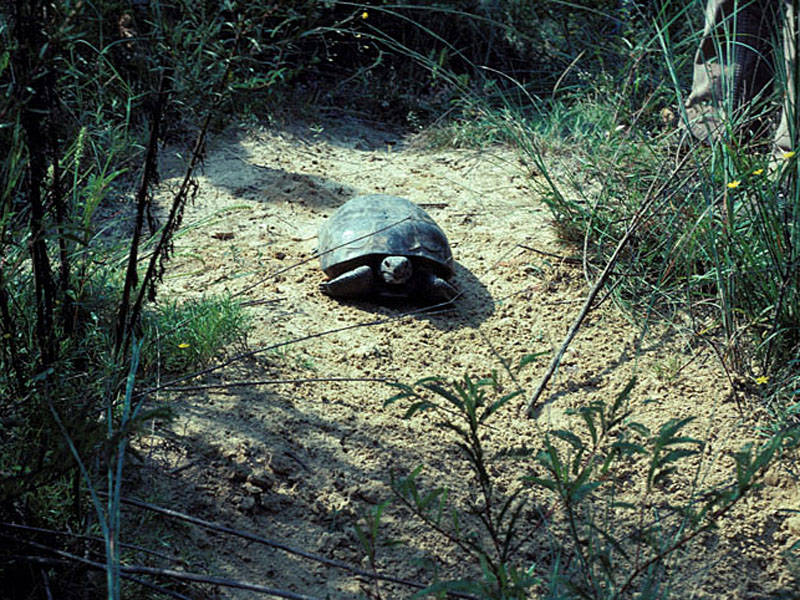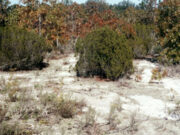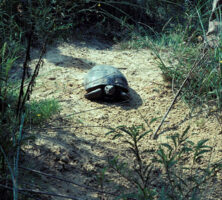Sandhills are found on the fall line in Georgia and along the northern and eastern banks of large Coastal Plain streams in Georgia, Alabama, Florida, and North and South Carolina. They are distinct both as a landform and in the types of vegetation they support. Visually, the sandhills are often striking as islands of exposed sand and sparse vegetation in the midst of denser forest.
Although soils across the southeastern Coastal Plain are typically sandy, sandhills are characterized by thicker sandy deposits one to twenty-five meters deep. An open, dwarf forest or savannah of longleaf pine (Pinus palustris), turkey oak (Quercus laevis), and wiregrass (Aristida beyrichiana) is the most common vegetation on these dunes. Several species of evergreen oak and woody evergreen shrubs as well as many drought-adapted grasses and herbaceous species complete the sandhill flora. Sandhills also form the prime habitat of Georgia’s state reptile, the gopher tortoise (Gopherus polyphemus), and of the endangered eastern indigo snake (Drymarchon corais).

Fall-line sandhills differ in origin from the riverine sandhills of the Coastal Plain. Sandhills of the fall line date from the Miocene Epoch (about 25 million years B.C.), when they formed the ancient coastline of the Atlantic Ocean. Riverine sandhills, smaller in extent and less continuous in occurrence, formed when sand from exposed river bottoms was deposited on the northeast banks of Coastal Plain rivers and streams during the Holocene (8,000 years ago to present) and Pleistocene (1.8 million to 8,000 years ago) eras. Dune soils are 95 percent quartz sand and are nutrient-poor, highly permeable, and extremely low in water-holding capacity.
Because sandhills are very unproductive sites, in the past most were maintained as islands of native vegetation. Since the mid-twentieth century, however, many sandhills, both fall line and riverine, have been converted to pine plantations or bermuda grass pasture (usually with the application of fertilizer), and occasionally to agricultural fields or residential developments. Even relatively undisturbed sandhills suffer from human intervention. Until recent years, fire had an important role in maintaining an open, parklike landscape, but fire suppression has now reduced the populations of gopher tortoise and other species of plants and animals that require open sandhill habitat.





